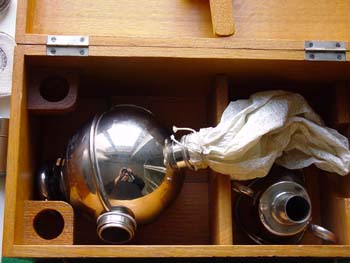|
Which sensations and feelings connect with an old reflex hammer, a therapy couch, a heat bottle, a glass syringe or an anesthetic mask? For a long time, no doctor was disappeared an idea of pain. Michael Faraday, a Davy's student, discovered the dazzling ether-damage 1801, which had already discovered Paracelsus in the 16th century without us. Only in 1842 Crawford W. Long (1815-1878), an American vicinity of Jefferson, led a first intervention, a tumor cutting, under aether prosecosis - his pioneering performance was not publicly recognized. Jackson in Boston had a randomly invalidity of ether in unconsciousness and deep sleep and followed this appearance. The two American dentists Horace Wells and W.T.G. Morton first worked with laughs (1844), then also aether (1845/46) in practice to draw painless teeth. The American dentists Horace Wells and Williamg. Morton experimented from 1844 with aether, on 16.10.1846 Morton led the Badstonian in the Boston, the first clinical prospects, historical etheric aerosis by a patient with a gatebor, in December of the same year, the London's surgeon Robert Liston turned the method for the first time in Europe, and ampute a thigh. October 16, 1846 - the famous "Aethetag", where William Thomas Morton (1819-1868) in Boston had aheads to stun a patient's chief surgeon John Collins Warren. Even as with this first successful demonstration of an etheric award of the breakthrough for a quick-spreading introduction of generalization for operational purposes, it was not missing on critical voices. Louis Ombredanne (1871-1956) was surgeon in Paris, where he promoted in particular childhood surgery and developed trend-setting techniques, for the operation of hypospadie. The device in 1908 of him for the aethearian aid is made of a hollow metal ball filled with gauze. |




